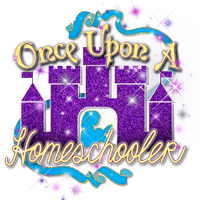As a parent of four children with varying degrees of dyslexia, dysgraphia, and visual processing issues, finding a curriculum that works can be difficult. Most curricula depend heavily on a child’s reading ability: a child must be able to read the written work, comprehend it, and then read the tests in order to answer the questions correctly. Even subjects that aren’t reading-based still require reading skills to be able to read the instructions on a math page or the steps to laying out a science experiment.
Students with dyslexia face challenges in every subject, especially since issues with dyslexia extend far beyond just reading and writing. These children often struggle to memorize math facts and historical dates, often have trouble learning foreign languages, and may have trouble remembering directions and faces.
With all those challenges facing a dyslexic child, why would a parent choose a program that is largely based upon reading books?! And how could a literature-based program help a child for whom books are a major issue?
Based on my experience and that of other parents who agreed to let me share their stories, yes! A literature-based homeschool curriculum like Sonlight does work for a child with dyslexia. Here’s why.
1. Sonlight Works Even Before Children Learn to Read
Sonlight (as well as most other literature-based curricula) doesn’t wait until your child is reading well independently to teach information. You’ll begin reading to your child about science and history in preschool, and continue reading to them up through middle school. Some parents even continue reading to their children in high school. Many of the History / Bible / Literature programs, and even the Science programs, have the parent reading books to the child well above the typical reading level of that age group.
Sonlight Levels Aren’t Limited by Grade Levels
For example, in Sonlight HBL D, one of the history spines is The Landmark History of the American People: From Plymouth to the West. This is an updated version of a book which was written, not to third through fifth graders as one might expect based on Sonlight’s grade recommendations, but as a social commentary for adults. In the book, you won’t find a watered-down, reading-leveled book with carefully selected vocabulary and content catered to this age group, but a full variety of interesting and engaging topics such as how propaganda created an influx of people from Europe to emigrate to America, how voting practices have changed over the years, and how the housing market in the New Land created business opportunities blocked to many back in the Old World.
[A spine is a book that provides structure to your year of study and is usually the main book used all year long.]You will be reading to your preschool-aged children about atoms and quarks, and your child in early elementary about how Hammurabi created the first known code of laws, and why many believe that Pharaoh Menes and King Narmer were the same person. Your child doesn’t need to be able to read those things themselves because the program relies on shared reading experiences between parent and child.
My oldest daughter, now age 18, has used Sonlight since she was 4. She was diagnosed with dyslexia at age 8. We have struggled with writing and spelling lessons since the beginning. However, she was surprising adults with her knowledge of history and science well before she was diagnosed. Because I read aloud to her about topics she would have struggled to read her own, her dyslexia didn’t hold her back from learning.
2. Sonlight’s Book Selections Promote Alternate Learning
The methods used in most classrooms and some homeschool programs are difficult for dyslexic children.
Students are asked to read materials and then answer questions based on the reading. They are assigned several books throughout the day, one or more per subject, where they are asked to pay careful attention to all the details and later regurgitate what they have learned.
Names, dates, and place words are often hard for dyslexic children to retain and remember. They spend so much time struggling to decode the words and remember details that they often miss the main point and have to go back and read it again.
Sonlight Approaches Learning Differently
A literature-based approach (instead of a textbook approach) is much easier for dyslexic children to digest. Children are presented with an important character or pivotal event. Then a story is built around it, drawing the child into a narrative, all the while creating mental hook for them to hang information on.
For example, in the book Breaking Stalin’s Nose from Sonlight’s HBL F, my second child wasn’t given a list of people and places to remember about Stalin. Instead, he was given one person to remember—a 10-year-old boy named Sasha. All the other events in the story revolve around that character. Through that character’s eyes, my son was introduced to Stalin and communism.
Those facts about Russia have stayed with him for the past four years. He still remembers not only the book, but many details about life in Russia during that time period—all because of the power of story (not dry facts) to help him understand.
3. Sonlight Allows You the Freedom to Adjust Every Step Along the Way
Because dyslexic children vary greatly in ability from subject to subject and display high levels of asynchronicity, they often require a highly customized curriculum. Sonlight allows you the ability to pick and choose the level your child needs for each individual subject.
Sonlight Allows You To Mix and Match
Below HBL D, reading level isn’t tied to the level of the program your child is working at. You are free to mix and match levels so your child can work on their reading skills without it affecting their learning in other subjects at all. Your child doesn’t need to struggle through difficult reading assignments in order to work at their level in other subjects. They can get a full, rich education in all their subjects, while they wait for their reading and writing skills to catch up.
Elizabeth, a 7-year-old dyslexic daughter of one of my friends, is working through Sonlight’s HBL C program with an older brother. Paired with it, she’s using Language Arts 1, and Grade 2 Readers. She is able to get exactly the level of work she needs in each subject and is able to progress at her own rate.
Sonlight Offers a Variety of Choices
- Not only can you pick and choose reading levels and history programs in the lower levels, but at every level you can choose which math, handwriting, spelling, or science you want and still get all the benefits of ordering a full package. For those who need to use an outside resource for challenging subjects such as spelling or writing, there’s a way to order a package prefect for your child. Call an Advisor to get help deciding what your child needs and placing a customized order.
- Sonlight offers hands-on projects and lap books to make learning more meaningful to children who struggle with words.
- Sonlight uses a wide array of award-winning living books so it’s easier to find these titles in audio book format. While I find that my dyslexic children learn best when I am reading to them, I sometimes rely on audio books especially during high school when kids want to be independent learners.
4. Sonlight’s Rich Read-Alouds Transform Reading from Chore to Joy
Because Sonlight uses wonderful living books that are far from the drudgery of ordinary textbooks, even if the books are hard to read at times, the captivating plot content and heart-touching characters engage your child. Listening to these stories read by a parent demonstrates that reading is enjoyable and interesting, not a struggle with little reward.
Michael, Elizabeth’s older brother, usually hates sitting still for workbooks and textbooks, but has recently begun asking his mother for “just one more chapter” of many of his favorite Read-Alouds. For a boy who’s not usually interested in stories, he can’t help but want to know more about Robin Hood and Michelangelo.
5. Sonlight Allows for Discussion Rather than Testing
It’s easy to assume a dyslexic child is less intelligent than she actually is, because she often performs poorly on tests, including tests for intelligence. Or he might not be able to keep up with his schoolwork because he can’t read all the assignments fast enough. However, a large percentage of dyslexic children are above-average in intelligence. They simply struggle to learn in traditional methods.
By taking the tests and the pop quizzes and extra writing assignments out of the equation, we can allow that intelligence to shine.
Cassandra, a 9-year-old in third grade (after having been held back because of her reading and writing issues in public school), was assigned a book report on the book Freckle Juice. She labored over her assignment for a full month, working diligently. When grades were released, she came home in tears. She had gotten a D on an assignment she had worked on longer and harder than most of her younger classmates.
Cassandra’s mother pulled her from school, determined to give homeschooling a shot. She came to me to help her pick the right level to start out at, and together, we concluded she would be happiest starting with HBL B, which would be a little on the easy side, while she worked on her reading and writing skills. One of her writing assignments this year was to give a book report on her favorite book. She chose a book her mother had read out loud to her, and gave a lovely oral book report far greater what she could have written herself, demonstrating a deep and nuanced understanding of the topic, and even adding a little research she had done on her own. She wasn’t tied down to what she could read or write on her own, but was free to display all her knowledge without hindrance.
Because I have so many dyslexic children, I need a program that not only can work with my children, but is easy enough for me to teach while still finding time to focus on the hard subjects. Sonlight allows me to spend large portions of our day enjoying school and reading together, which makes the math, reading, and writing portions of our day not only more tolerable, but more fun. In the end, I am raising dyslexic children who not only can read and write, but love reading and writing.


